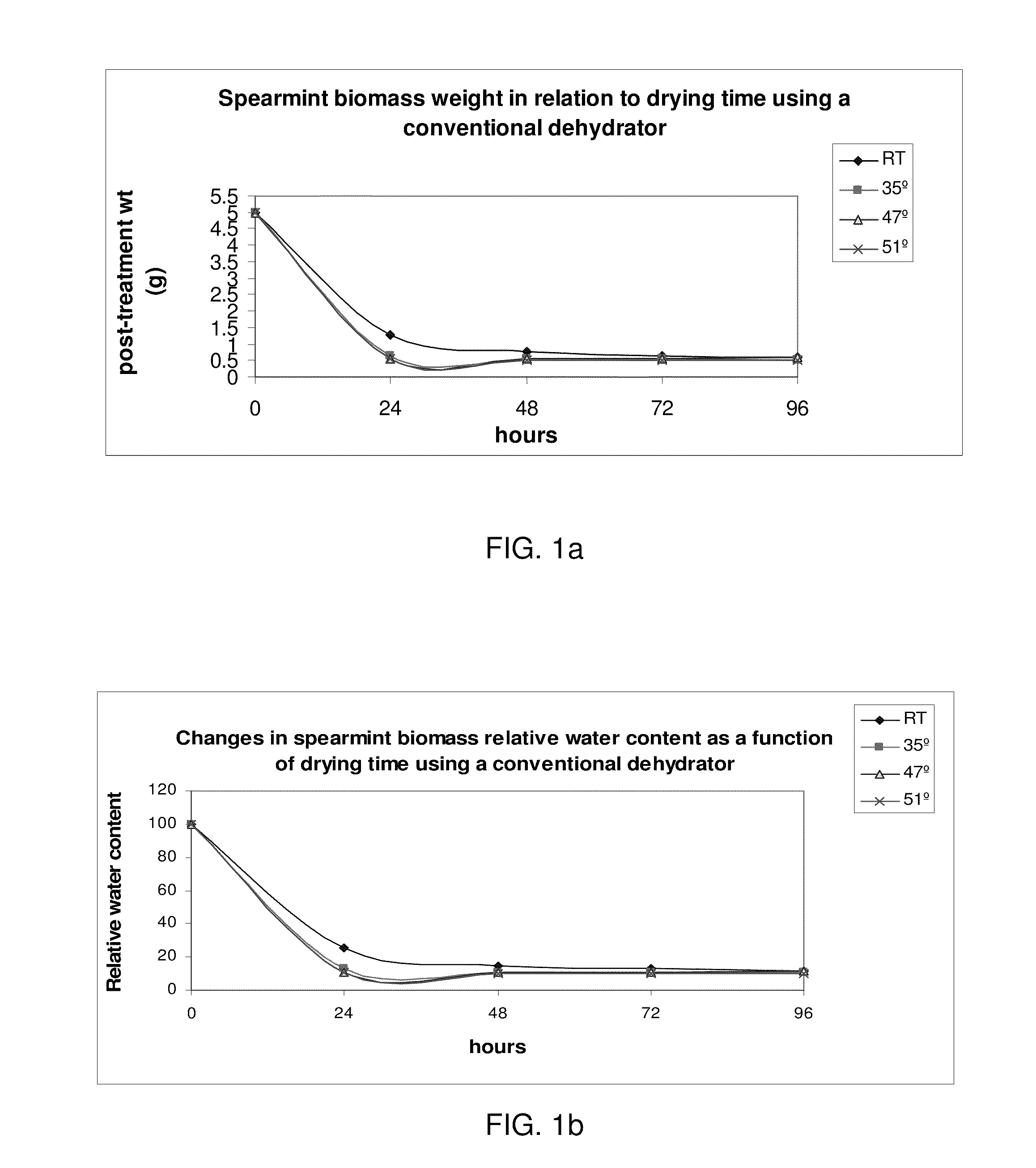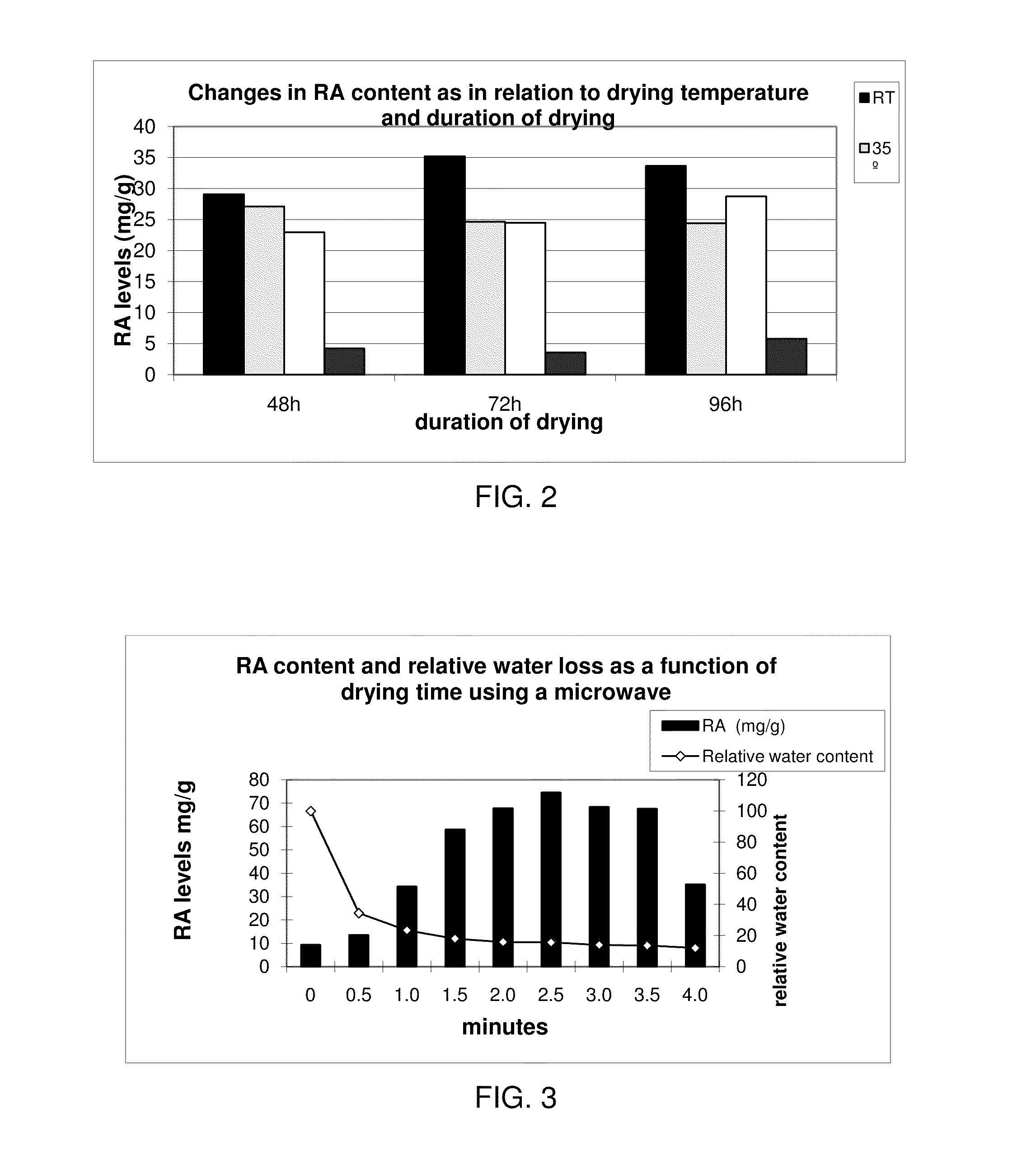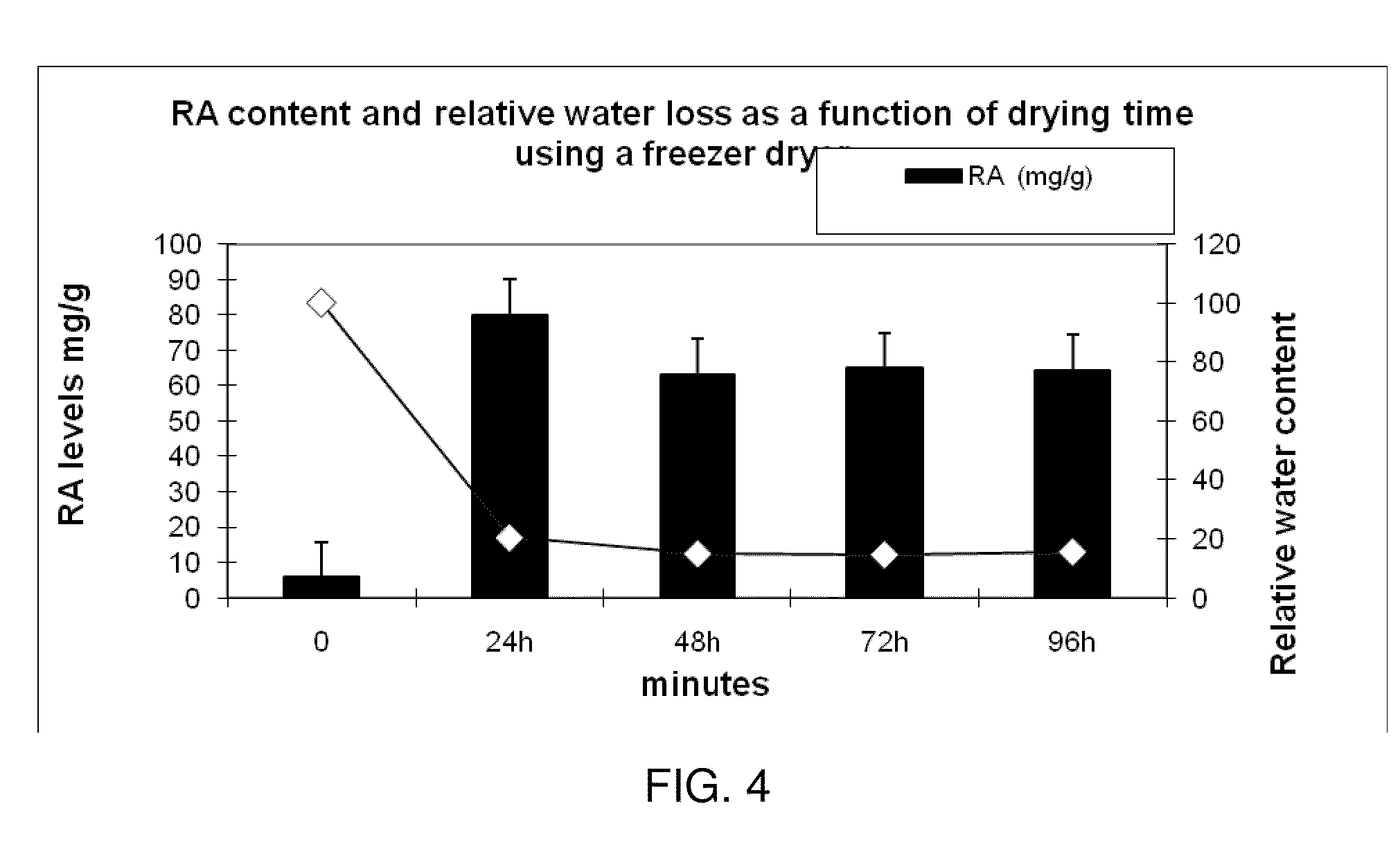Plant Material Drying Methods
- Summary
- Abstract
- Description
- Claims
- Application Information
AI Technical Summary
Benefits of technology
Problems solved by technology
Method used
Image
Examples
example 1
Materials and Methods
[0018]Plant Material and Sample Collection. A proprietary spearmint line capable of rapid regrowth and accumulation of high RA levels was chosen for this study. Clones of this line were established at a greenhouse during winter months (November-January) under supplemental illumination. Samples for this study were taken by clipping the top 4-6 cm of the plants that were comprised of young new leaves with smaller stems. The initial fresh weight of each replicate of spearmint tissue sample used for different drying methods was 5±0.05 g.
[0019]Drying Methods: Drying experiments were carried out using three different drying processes: conventional dehydrator, conventional microwave and freeze-dryer.
[0020](a) Conventional dehydrator: Leaf tissue was dried using the standard vegetable dehydrator (Open Country—Sportsman Kitchen) in three replicates for each treatment. Pre-weighed leaf tissue was spread as a thin layer on the trays of the dehydrator. Three different dryin...
example 2
[0059]Approximately 2.5 acres each of the 2 proprietary rosmarinic acid (RA) hyper-accumulator spearmint clonal lines (KI-MsEM0110 and KI-MsEM0042) were grown at two field locations. A pilot scale microwave dryer was assembled and transported to the fields for drying of the spearmint plant material shortly after harvesting. The microwave dryer system included two 75 kilowatt transmitters with wave guides two oven units which included variable speed top and bottom conveyor belts to hold the spearmint leaf and stem tissue as it passed through the ovens (AMTek, Cedar Rapids, Iowa).
[0060]Spearmint leaf and stem tissue was harvested in the field using a windrower (John Deere 3430) and manually lifted into a wagon for transportation to the microwave dryer system, situated in a farm building. Belt load, energy level and belt speed were varied until leaf and stem tissue reached a moisture level <10% and arcing occurrence was minimized.
[0061]Composite samples of leaf and stem tissue were als...
PUM
 Login to View More
Login to View More Abstract
Description
Claims
Application Information
 Login to View More
Login to View More - R&D
- Intellectual Property
- Life Sciences
- Materials
- Tech Scout
- Unparalleled Data Quality
- Higher Quality Content
- 60% Fewer Hallucinations
Browse by: Latest US Patents, China's latest patents, Technical Efficacy Thesaurus, Application Domain, Technology Topic, Popular Technical Reports.
© 2025 PatSnap. All rights reserved.Legal|Privacy policy|Modern Slavery Act Transparency Statement|Sitemap|About US| Contact US: help@patsnap.com



